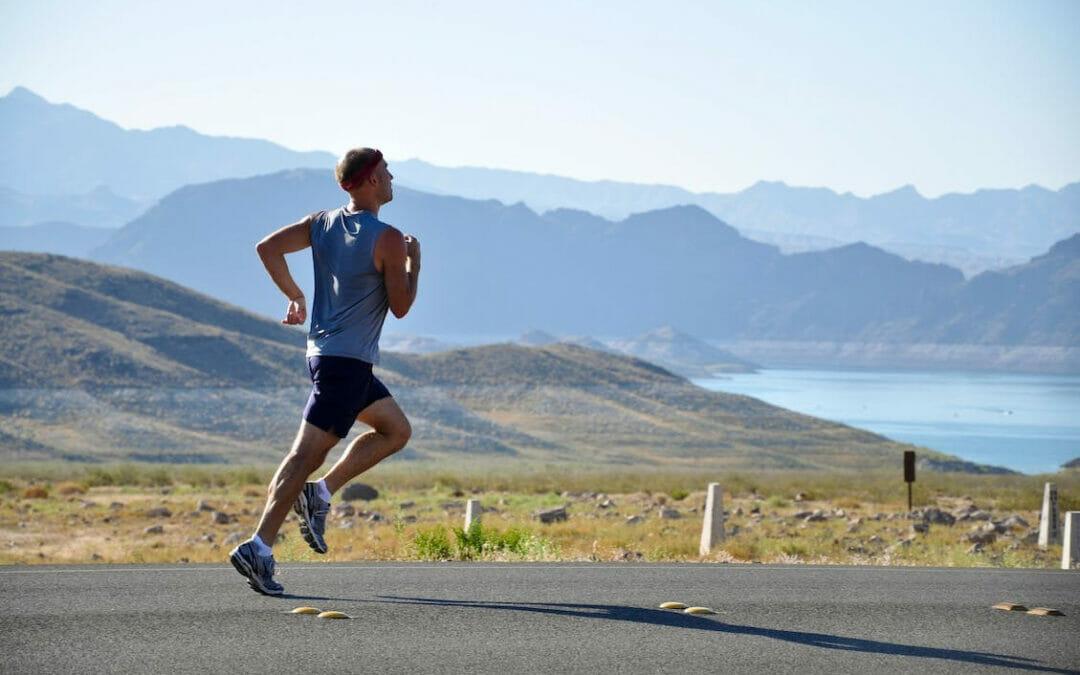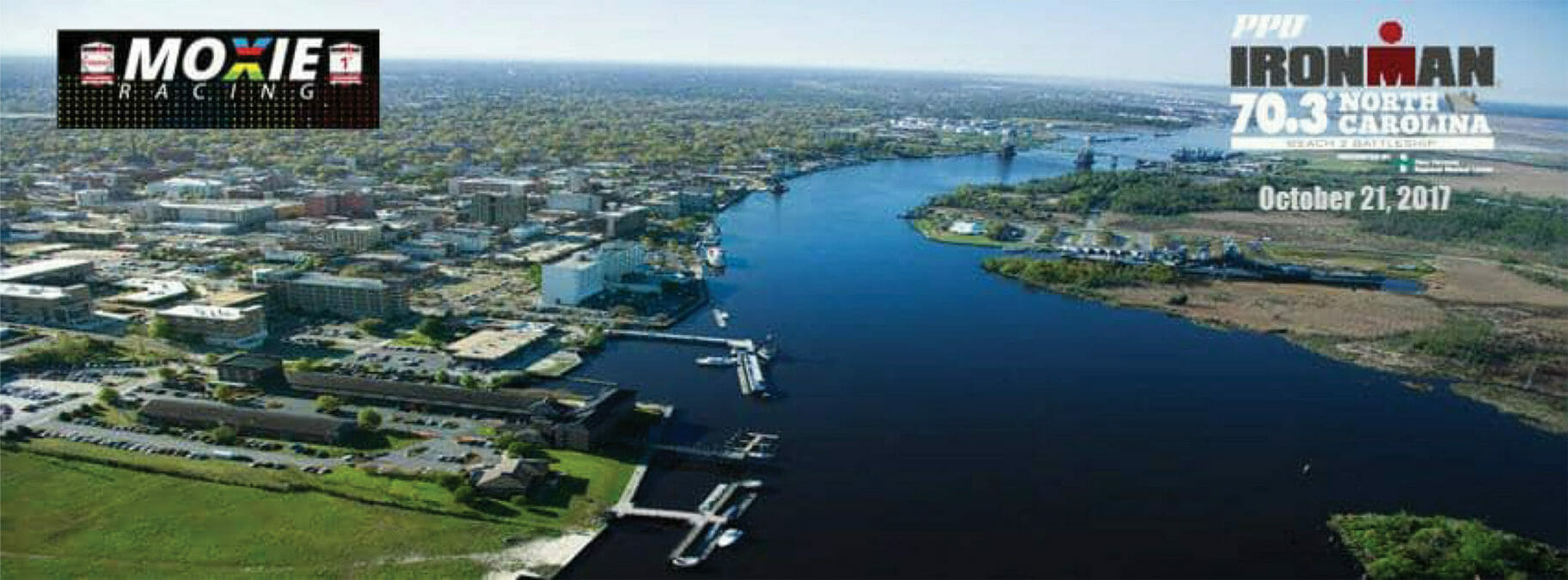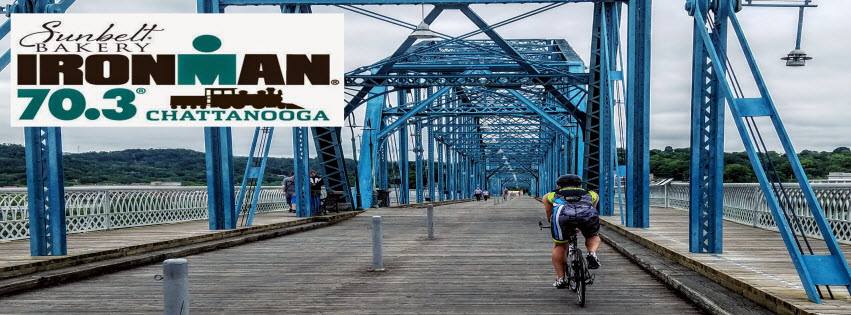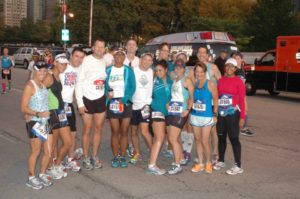
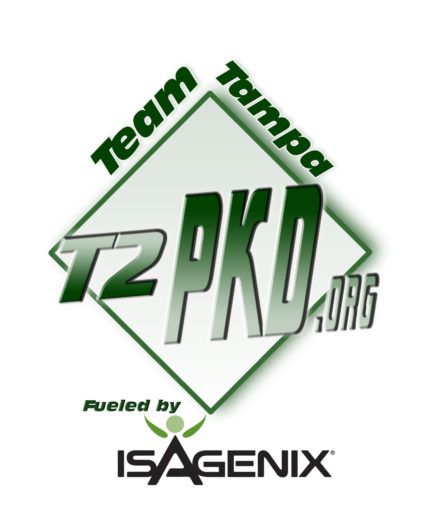
NYC Marathon 2015: The Why
My Why – PKD
The human brain is an advanced computer that controls many different systems. The body is like a room full of servers each independently managing a different system with one major system, the brain, as the master controller for all of them.
When the master controller has a difficult task to undergo, the systems will cluster together in order to complete the task as efficiently as possible. If one of the systems begin to fail, it doesn’t mean the task will not be accomplished it just means another system will take over the lack of work. The work may not be handled as efficiently, but nonetheless, it will be completed.
Only when the master controller issues a command to stop will the other systems desist what they are programmed to do. The question would be “Why did the Master Controller issue the command?”
This long analogy comes right down to a quote I use all the time. Internally, and with my client athletes. “The mind will quit 100 times before the body does.” Every excuse will come to mind while an athlete may be suffering, but it is the reason “why” they are challenging themselves that will override the mind’s command to stop.
My 15th Marathon was the 2015 New York City Marathon, and my “Why” was tested.
In 2014, at the completion of the New York City Marathon, I said to myself, “Self, I am really happy I did it. It was a tough race, in tough conditions (sub-40 degree temperature with 33 mph winds), but we did it. It may not have been the time we wanted, but scratch the largest marathon in the world off the list. I will probably not do this one again.”
My reasoning was the logistics of the race.
First, it is located in New York City. That just says a lot of $$$ is going to be spent.
2) Getting around the big apple in a timely manner is difficult for someone not living there.
3) I have a lot of friends that live in the city and I want to see them, which means, more travel, meals and more $$$ spent.
4) The race doesn’t start until 9:50 which at 4 hours means 1:50 which is after the usual 12 pm checkout time. Again, more $$$.
5) In order to pack the corrals with 50,000 runners, it is required to be in the runner villages close to 3 hours early, and in sub-40 degree weather for someone from Florida is somewhat uncomfortable.
6) After leaving the finish line when the legs are burning and everything is getting stiff, it is another mile to get to checked bags and then another half mile to get out of the park where there are no cabs. Then another 5 block walk to the subway.
Other than that the race is amazing.
This year, the reasons above meant nothing to me, because I ran this race not for me, but as a member of Team Tampa PKD for Erika Bragan, Jennifer Thomas and all of the other people affected by Polycystic Kidney Disease (PKD).
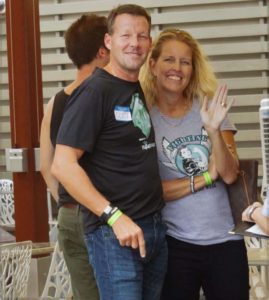
Scott & Erika Bragan
In 2009, Scott offered me a chance to run the Chicago Marathon for the Polycystic Kidney Disease. At the time we were both in a boot camp class at a Lifestyle Family Fitness. He mentioned it to a few others as well, so I brought up the idea of a team concept, where we could organize events to raise awareness and funds for PKD and then split up the money so everyone could reach their goal. it actually worked for the 10 of us that competed that year, as we raised around $26,000 for the PKD Foundation.
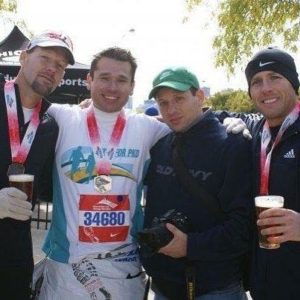
Team Tampa PKD – Chicago Marathon 2009
In 2011, we resurrected the team and signed on twenty-two members and raised over $56,000 for the foundation. Again in 2013 we had just Five members and raised over 25,000 that year as well.
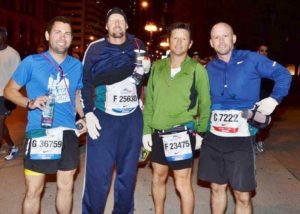
Team Tampa PKD – Chicago Marathon 2013
(-1 not pictured)
This year, we again signed five members. Scott, Rich, Myself, Kevin, and Karen. we raised over $25,000 again, but this year we also accomplished something else. Over the last few years, Erika’s kidney functions were reduced to less than 5% apiece. A normal human being can survive on 5% of one, but with PKD it is inevitable that the kidneys will fail.
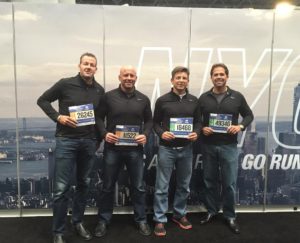
Team Tampa PKD – NYC Marathon 2015
(-1 not pictured)
Erika had already been put on the donor list for over a year, but it had yet to pan out, so we added not only raising as much financial assistance for the foundation but finding a donor for Erika as well.
For over a year, Erika has been in pain, not sleeping and basically been in a state of misery. Scott has recounted this for me numerous times, so when he said that it was time to start thinking about a transplant, I immediately asked him for the details to get tested. I wanted to help any way I could and if it meant giving up a kidney so be it.
The Bragan’s waited to see if being on the donor list would pan out, but as Erika’s kidney functions continued to deteriorate, family and friends stepped up to be tested as donors.
I was tested as a kidney donor, with the preliminary tests proving positive, meaning I was a match.
However, the secondary tests diagnosed protein in my urine which is common in endurance athletes. Unfortunately, for the medical staff, it is a risk for kidney stones which have a small probability to clog my ureter and if that was the case now, I would have another kidney to fall back on. If I donated one, it could be fatal.
I was heartbroken when I found out, but I understood the reasons.
On July 10, my friend and Team Tampa PKD teammate, Rich O’Dea was on a blind date at the Imagine Dragons concert. While getting to know each other Rich made mention of Team Tampa PKD, the marathon and Erika. At first, it seemed a nonchalant question when she asked how to get tested, so Rich took as her just being nice, but even after she ended up returning to a long relationship, she still communicated with Rich she wanted to get tested.
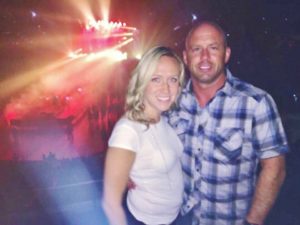
Rich O’Dea & Jen Thomas
Her preliminary tests proved she was a match, and the secondary tests proved she was healthy enough to donate, so on Friday, Oct 23, the Tampa General Hospital Transplant committee approved the living donor kidney transplant from Jennifer Thomas to Erika Bragan, and scheduled the surgery for the 18th of November.
When I found out that Jennifer passed the second round of testing, I was absolutely ecstatic that she would be able to do what I and three other people could not. I am still absolutely overjoyed that Erika will lead a longer more normal life and Scott, Madison and Spencer will continue to have their wonderful wife and mother.
While in an interview with ABC, Jennifer was asked why should give up her kidney for a total stranger. Without skipping a beat, or even taking a breath she said, “Why wouldn’t I? The more important question should be, why is it so shocking that I would.”
I happened to be in the room when she was getting interviewed and I just about fell over. Without trying to sound conceded, or take away any thunder from her, but I felt like Jennifer was someone who actually thought just like me.
Jennifer’s medical bills will be taken care of 100% by the Bragan’s insurance, but the recovery time may cause a little bit of financial hardship.
Of course, Team Tampa PKD is stepping up and hosting an event called Tailgate for a Transplant prior to the Tampa Bay Buccaneers vs New York Giants NFL Football game on November 8th at 1 pm. (If you would like to help, but cannot make it to the tailgate please click here)
This is my “Why”.
What is your ‘why’?
Carpe Vitam!
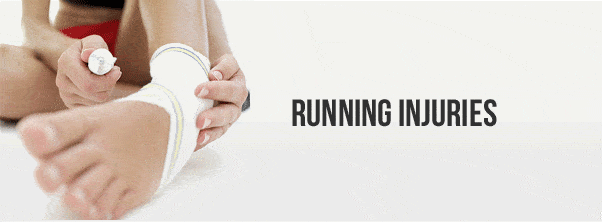
The Goof’s Guide to Common Injuries and Prevention
I believe I have started to write this post on injuries, a number of times, trying to be as clear as possible without seeming conceited or that the information I am giving is absolute. That being said I am giving this disclaimer:
The information in this post comes from experience, my personal research and conversations with Physical Therapists, Bio-mechanical experts, Orthopedists and other athletes. I am not a physician or medical expert, so please take this information as opinion based on cognitive research. Also, there is an exception to every rule and another explanation. I do welcome comments that give constructive criticism, but I make mention to this disclaimer first.
What causes injuries?
You might be surprised to hear that there are only two reasons runners (and other athletes) get injured; accidents and imbalance. Accidents are obvious right? For example; rolling the 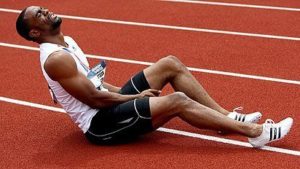 ankle stepping off a curb, falling, being hit by a bicycle, etc.
ankle stepping off a curb, falling, being hit by a bicycle, etc.
Imbalance will cover the why’s of the rest of the injuries. The human body is designed for every system to work in synergy, therefore when one piece of the puzzle is not operating a full capacity or efficiently, the other systems have to do more work. This is when the imbalance occurs.
When talking with Physical Therapists and Bio-mechanical experts I was shocked at some of the stories I heard. One story I heard was of a football player who was training, running 100s up and down the field carrying a ball. He had extended his shoulder just barely beyond its usual range of motion, and he ended up with severe pain in his opposite quadricep. “What?!!!!” was my initial reaction, however, I was then educated on the connective tissue (ligaments, tendons etc) which can be traced from the very top of our skull, down through our torso and into the extremities. Everything is connected.
Common Injuries
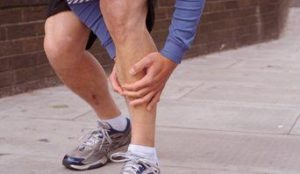
As another example, one of the most popular injuries for newer runners are the dreaded shin splints or medial tibial stress syndrome (MTSS).
Scientifically it is caused tiny micro tears of the fibers connecting the medial soleus fascia through the periosteum of the tibia where it inserts into the bone. Due to the soleus becoming so week that the constriction starts to bow the tibia. In more layman’s terms, the calf becomes so tight due to weakness and inflexibility, that the connective tissue pulls on the bone. (There is some physiological proof and complaints that more runners are getting shin splints and other injuries due to training in calf sleeves and other compression gear, but I will address this in another post.)
This same weakness, fatigue in the calf muscle can also cause another popular injury. Plantar Faciitis. In this case, instead of the connective tissue weakening through to the soleus is pulls on the plantar fascia causing inflammation which can be debilitating.
An injury can be traced either by the athlete themselves or by a professional to a point of imbalance. Most likely somewhere within the full spectrum of the athletes, body, behavior and, do I dear say it, attitude.
How can injuries be prevented?
As a coach and trainer, my first rule, and one that I increasingly live by, is “Do no harm.” Therefore, I am always asking questions starting at a high level and continuing to get more specific. (The examples below are catered more toward running, but can be used in any sport.)
Planning
- Is the effort balanced through each week? (So, no high intensity days back to back)
- Is the volume balanced? (No consecutive high mileage days)
- Is the duration balancing?
- Is there enough recovery?
- Does the periodization allow for peaking at race time, but still allow for enough rest prior to the race?
Strength Training
- At what time in the plan does strength training make sense?
- This can be critical. If the strength routines are not designed to not only strengthen the muscles used for the sport, but strengthen them for the way they will be utilized, it can be detrimental. For example: Heavy squats for a runner. What is targeted? The glutes, and hamstrings. How are they being utilized in a downward and upward motion causing the hamstrings and glutes to gain size in that direction. How do we run? In a forward motion right? Well if there is more pull on the glutes in the sitting position gravity will work to pull backwards. That is working against what we want. It would be better to do air squats or light dumbbell squats where the motion is more forward which would be utilizing the muscle the right way.
- Are the exercises within the workouts specifically designed to strengthen a muscle, or group of muscles, in the same way they are utilized within the sport?
- Are the intensities, duration, reps and sets balanceing within the weeks of that period in the plan?
- At what time in the plan does strength training make sense?
Form and Technique
- Does the plan take into account work on form and technique either as a full workout or within workouts?
- Is it enough? Or Is it too much? (This is obviously specific to the athlete)
- When looking at the athlete do they look symmetrical? Are there any imbalances to the eye? (over-pronator, supinator, flares,)
- Is the athlete in the right shoes and equipment?
Nutrition
- Is the nutrition in strategic balance, fueling the muscles properly for the sport?
- Is there enough calories? Are there too many calories? Are the calories nutritional dense?
Mindset
- Is this the right time in the athletes life for this race?
- Do they have a support system?
- is the plan fitting in the athletes life with minimal impact, or is there planning for the impacts ahead of time?
- What kind of attitude does the athlete have towards training and does the plan fit that attitude? Or should there be an adjusting of attitude?
There are definitely more questions I ask, however, I think these examples give a good idea of why balance is so important.
The term “overuse” is being used quite a bit, but what is it? It’s an imbalance of planning or lacking thereof. Tracing Injuries is completed from the highest level which would be the training plan, all the way down to the balance of strength and flexibility within the connective tissue of the body. Personally, I think it is amazing that on one hand our bodies can endure a lot, but if we don’t notice those little weaknesses, it will create an imbalance that could cause and injury that may or may not keep us from doing what we love most.
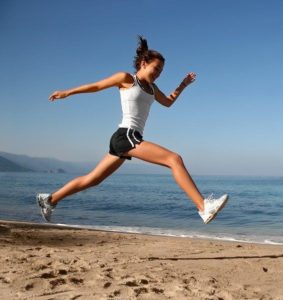
Balanced Plan -> Period -> Weeks -> Workouts -> Balanced Form -> Body -> Mind
Carpe Viam!

How Sleep and Recovery will Help You Cross the Finish Line
 My coaches all have always tried to instill in me the importance of a good night sleep. Especially as the intensity and duration of my workouts have been increasing. The issue for me is that I have a phobia of growing older. What does one have to do with the other? I always feel like I am wasting my life away by sleeping. Think about it. As athletes we all want to experience life to the fullest which is why we train and race. Sleeping is eight-ten hours of time we could still be experiencing life and what the heck are we doing but laying there. What a waste! Or is it?
My coaches all have always tried to instill in me the importance of a good night sleep. Especially as the intensity and duration of my workouts have been increasing. The issue for me is that I have a phobia of growing older. What does one have to do with the other? I always feel like I am wasting my life away by sleeping. Think about it. As athletes we all want to experience life to the fullest which is why we train and race. Sleeping is eight-ten hours of time we could still be experiencing life and what the heck are we doing but laying there. What a waste! Or is it?
With an anticipated two Ironman Triathlons on the horizon for me, I decided to dig a little deeper and find out what happens during sleep and what benefits it gives us. I am not talking about the regular answers that we hear all the time; “it recharges the body”, “muscles grow during sleep not during workouts”, yada yada yada. I am not going to bore anyone with the “What is Sleep?” lecture. We all received that in high school biology and health class. I am just going to hit the nitty gritty about why we as athletes may need more sleep, because that is what I wanted to know.
Hormones & Muscle
During our waking hours, the body burns oxygen and food to provide energy. This is known as a catabolic state, in which more energy is spent than conserved, using up the body’s resources. When we sleep we move into an anabolic state – in which energy conservation, repair and growth take over. Levels of adrenaline and corticosteroids drop and the body starts to produce human growth hormone (HGH).
A protein hormone, HGH promotes the growth, maintenance and repair of muscles and bones by facilitating the use of amino acids (the essential building blocks of protein). Every tissue in the body is renewed faster during sleep than at any time when awake.
Immune system
I have always heard that sleeping more when fighting infectious illness aids recovery. Getting enough sleep can also help resist infection, as some studies of healthy young adults have shown that moderate amounts of sleep deprivation reduce the levels of white blood cells which form part of the body’s defense system.
A killer of cancer called TNF – tumour necrosis factor – also pumps through our veins when we are asleep. Research has shown that people who stayed up until 3am had one-third fewer cells containing TNF the next day, and that the effectiveness of those remaining was greatly reduced. So that little factoid hit me over the head like a ton of bricks.
JUST as the world is governed by light and dark, human beings also have an inbuilt body clock called the circadian rhythm. The circadian rhythm regulates all the processes of the body, from digestion to cell renewal.
Body temperature
Body temperature falls throughout the night. By about the sixth hour of sleep it has dropped to about three degrees below the temperature it was in the evening. At the same time, our metabolic rate drops too which if you’re trying to lose weight may not be a good thing, but it serves a purpose.
The skin  The top layer of the skin is made of closely packed dead cells which are constantly shed during day. During deep sleep, the skin’s metabolic rate speeds up and many of the body’s cells show increased production and reduced breakdown of proteins.
The top layer of the skin is made of closely packed dead cells which are constantly shed during day. During deep sleep, the skin’s metabolic rate speeds up and many of the body’s cells show increased production and reduced breakdown of proteins.
Since proteins are the building blocks needed for cell growth and for the repair of damage from factors like ultraviolet rays, deep sleep may indeed be beauty sleep.
Digestive system
The body requires a regular supply of energy and its key source is glucose(sugar). This is constantly burned up to release energy for muscle contraction, nerve impulses and regulating body temperature. When we sleep, our need for these energy reserves is marginal so the digestive system slows down to a sluggish pace. The immobility of our bodies promotes this. Hence, the reason for not eating too late. The acid and enzyme levels have dropped to a point where food is not digested as quickly.
Maybe all those coaches were right. We produce HGH to repair muscles, our immune systems fight cancer and diseases, our skin repairs itself and our digestive system cuts out, so we do not need to burn any sugar. It sounds like I have been looking at this all wrong. I should be sleeping in order to extend my life. Can you say epiphany? (Hopefully you can say it better than I can spell it. It didn’t come up in spell check)
After all the reading on sleep I have completed, I am really tired. Maybe I ought to get some sleep.
Carpe Viam!
(or Carpe Sleepum?)
The 1st week: Are my goals realistic?
I have come to the realization that even I, as the epitome of the positive mental attitude, still hear those negative voices in my head. For all the conversations I have with clients, friends and other athletes about going out and just having fun, I still have grand notions of finishing races with a PR(personal record) and while working out this week those goals seem daunting.
I had three Lactic Threshold tests I had to complete this week; one each for swimming, biking and running. While just doing these tests I felt like I was really out of shape, and truth be told, I did take an off season for the last couple of months, at least by triathlete standards. I did complete at least 5 hour long workouts a week with a half-marathon and a 10k thrown in there, and, oh yeah Ragnar, but I wasn’t in “training” mode per say. This week I started back “in training” and my goals seem so far off and this is only my third day.
Monday, I completed my Bike and Run LT tests which consisted both of a 10 minute warm up, followed by 40 minutes of the event at a pace that burned my legs and put me into a feeling of oxygen deprivation but not so much that I couldn’t complete the full 40 minute main set which was then followed by a 10 minute cool down. My running LT is 173 and my biking LT is 165. I looked into my future workouts they are noted with requirements that include the LT. For instance: Bike 12×1 minute climbs at LT+10, meaning I should be climbing and my heart rate should be 175. Sounds like fun doesn’t it? I know my body will acclimate, hopefully I won’t make a mess before it does.
Tuesday, I completed my first bike workout and strength workout. The bike was 8-12×1 minute climbs in the saddle at a RPM of 50-60. Now my normal riding RPM is 85-95, so you can imagine the resistance that had to be on the bike. I ended up doing it on the spin bikes at LA Fitness, because, well, there are no hills in my general vicinity which is Tampa, Florida. Nothing but flatland here. I have to travel 45 miles north to San Antonio to get any resemblance of some hills, and during the week, that just is not happening. Why? I have a responsibility to this activity called “work”. I wish I could sit here, blog and comment all day, but unfortunately I cannot. I blog in between meetings, lunch and then edit when I can. This workout while being fun, was what I would call, THE QUAD KILLER. It was brutal.
Unfortunately, I was late getting to the gym so I was not able to get my strength workout in, so I showered, drove to work and then returned that evening. Luckily, I always have an extra set of workout clothes in the car. (I think I got that from Ben Mena. He is notorious for spontaneously telling his girlfriend to just drop him off 10-15 miles from home and after changing into a spare set of shorts and shoes he runs home.)
I haven’t worked out with weights in a while, and I know from my studies of the anatomical makeup of muscles and the neurological systems of the body that there is a “breaking in” period no matter how much experience you have lifting. In order to activate the pleasure center of my brain instead of the pain center, I had to drop the weight down and do the exercises concentrating on good form. It was a circuit of 5 supersets and it was not easy, no sir, not easy at all. Deadlifts, pull-ups, squat to overhead thrusts, medicine ball wood choppers, side planks, cable twists and more. I felt beat to death afterwards. Of course, I understand my body enough that I had to stretch very well afterwards or my back would be yelling at me later.
I also learned why I really enjoy working out in the morning. It was extremely busy at the new South Tampa LAF last night. I barely got a parking space, and I ended up having to do most of the movements in a tiny little space, while other members were just waiting to pounce. It was at that point I read myself the riot act and vowed that no matter how much I had to do during the week, I would just wake up early to finish all of my workouts in the mornings.
That vow started this morning as I was up at 4:30 and ready to leave at 5 even though my first workout was track at UT which didn’t start until 6. That workout was brutal as well; 800-400×3-1mile-400×3, at least this week I didn’t falter until the last 400 and only by a couple of seconds. As soon as I finished and cooled down I headed to LAF to do my swim T-test. Basically this is 1000 meters swam as if I was in a race and then the average time of a 100 meters is considered my T-Pace for workouts. Future workouts for example included “4×100 at T-pace – 10 seconds”. I have been working really hard on my body position in the water, but I am still really slow. (Notice I am not mentioning what my T-Pace actually is.) With a pull buoy or fins, I can go forever at 1:50 min per 100m, but without I am…well…a little slower.
After going through all of this, I guess I feel like I should. There is a long journey ahead. I might as well enjoy it.

